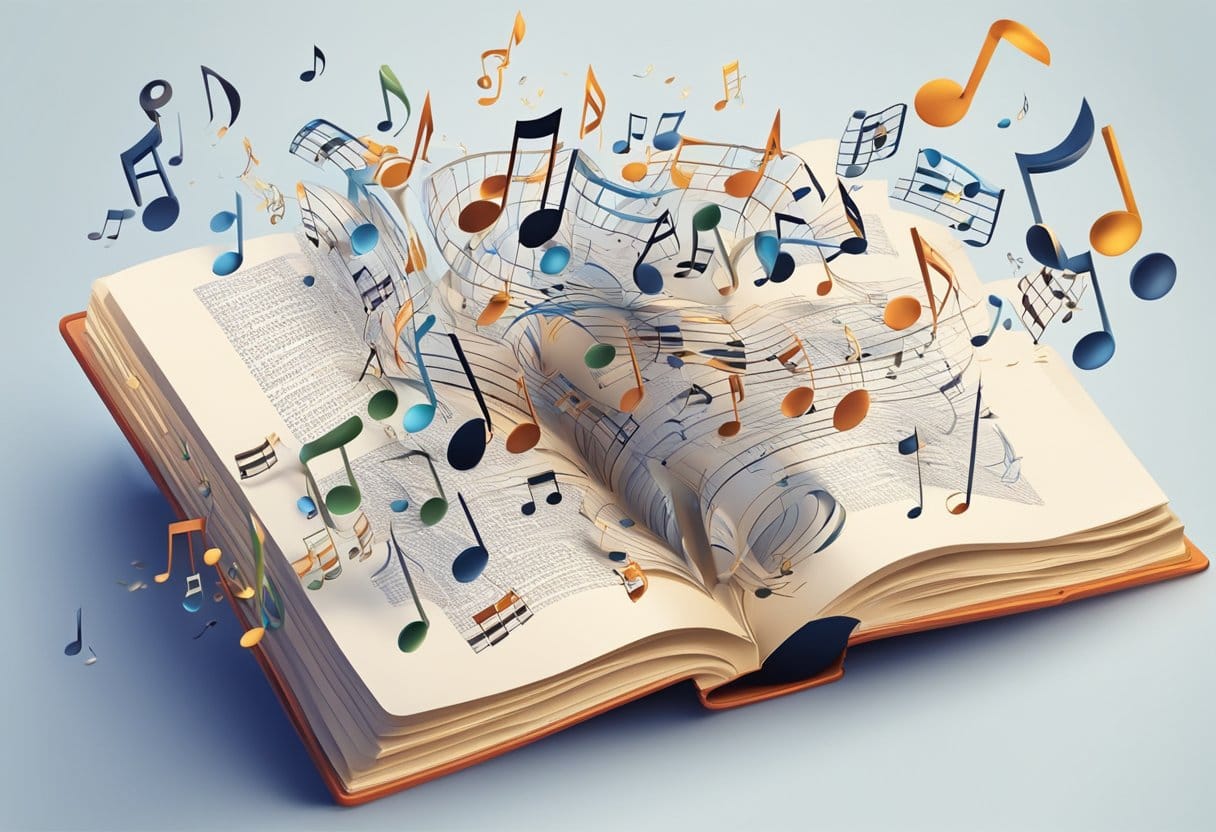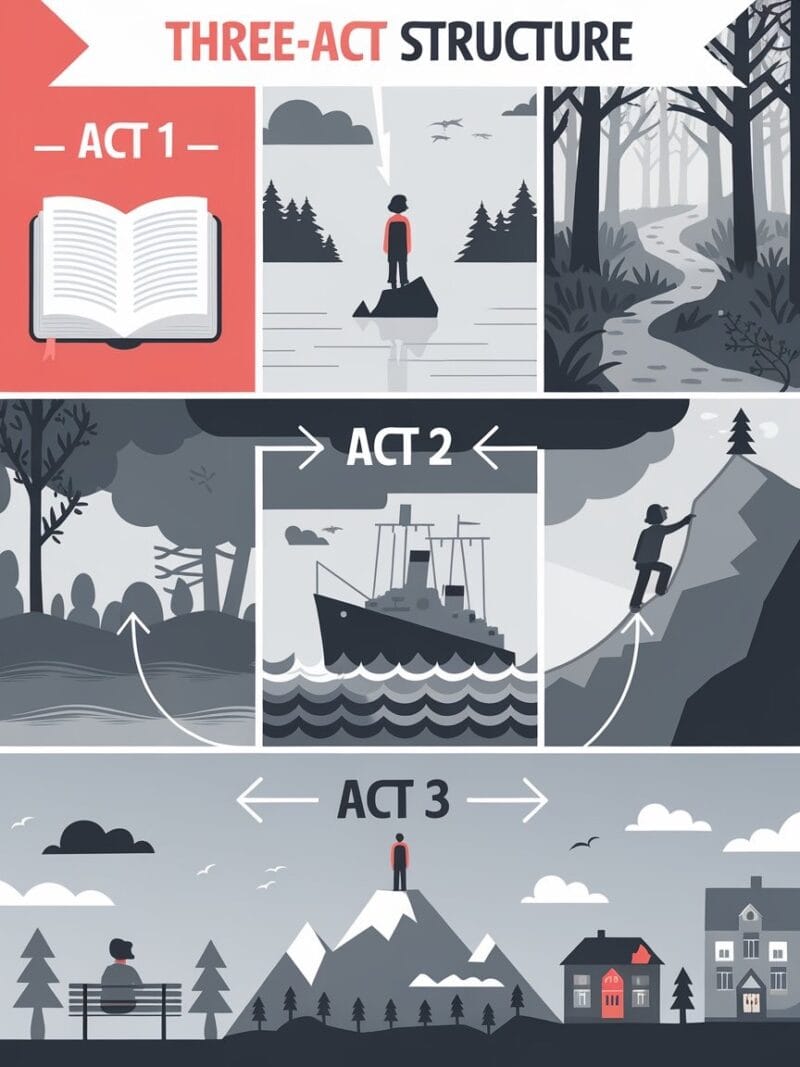- Literature and music are interconnected art forms that enhance each other through shared elements. Music can be viewed as literature when it incorporates narrative and poetic aspects, while literary works often draw on musical techniques to evoke emotions.
- Key points include:
– Music’s Influence on Literature: Historical texts, such as The Decameron, show music’s impact on literary techniques like rhythm and harmony.
– Poetic Elements in Music: Meter, rhythm, thematic structures, imagery, and metaphors shape music’s expressive power.
– Storytelling in Music: Songs convey narratives through character development and oral histories, exemplified by Bob Dylan’s “Hurricane” and folk ballads.
– Songwriting as Literature: Iconic songwriters like Bob Dylan and Joni Mitchell blend lyrical artistry with narrative depth.
– Taylor Swift’s Contribution: Swift’s intricate lyrics and literary references have garnered academic recognition, highlighting music’s literary potential. - This fusion of literature and music enriches cultural expression and underscores the power of storytelling.
Literature and music, though distinct art forms, share a deep and fascinating interconnectedness that enriches both genres. Music can be considered literature when it employs narrative and poetic elements to convey stories and emotions through its lyrics and compositions. On the other hand, literary works have found poetic expressions in music that play an integral role in the plot, evoking emotions and enhancing the narrative.
Modern scholars consider how music’s structure and patterns can be analogous to narrative techniques in literature. Conversely, scholars analyze lyrics for their storytelling potential, akin to poetry, demonstrating that music and literature can function as fluid forms that profoundly inform and enrich each other.
Finding Music in Literature
From historical texts like Giovanni Boccaccio’s The Decameron (1370’s, published in English in 1620) to modern interpretations, music’s influence on literature is palpable. Writers often use musical techniques such as rhythm, melody, and harmony to mirror the acoustic qualities of music, creating a symbiotic relationship between the two art forms. This blending allows literature to take on performative aspects, inviting readers to experience the text in dynamic, engaging ways.
Historically, discussions about music’s presence in literature have their roots in the mid-20th century. Steven Paul Scher identified different categories, such as “music in literature,” emphasizing how written works imitate the acoustic qualities of music.
Musicalization, a term coined by Aldous Huxley in his novel Point Counter Point (1928), refers to the integration of musical elements into literature. This fusion has piqued scholarly interest for decades, reflecting the rich and diverse ways literature and music intersect.
In contemporary times, the interpretation of music in literature has expanded. For instance, postcolonial and migration literature frequently use music to express cultural ambiguities and challenge dominant discourses.
Music as Literature: Analyzing Poetic Elements in Music
In music, poetic elements such as meter, rhythm, thematic structures, imagery, and metaphors significantly contribute to its expressive power. These elements shape the listener’s experience, drawing parallels between lyrical poetry and musical composition.
Meter and Rhythm
Meter and rhythm in music serve as the backbone of poetic lyrics, creating a structured flow that guides the listener. Just as in traditional poetry, the meter in music dictates the timing and emphasis of each syllable and word.
Song lyrics often exhibit complex rhythmic patterns, weaving words with music seamlessly. This includes various types of meter, like iambic, trochaic, and anapestic, often matching the natural rhythm of speech.
For example, in iambic meter, the pattern of unstressed and stressed syllables mirrors the heartbeat, adding a natural and compelling rhythm. This rhythmic approach can heighten emotional responses and make lyrics more memorable.
Thematic Structures
Thematic structures in song lyrics allow the exploration of recurring motifs and ideas. These thematic elements can cover broad topics such as love, loss, and identity, often presented in a narrative form. The arrangement of verses and choruses often highlights these themes, enabling the listener to connect emotionally with the music.
Poetic song lyrics frequently employ refrain and repetition, reinforcing the central theme and making the song’s message more impactful. This technique solidifies the narrative and enhances the listener’s engagement.
Imagery and Metaphors
Imagery and metaphors are crucial in crafting vivid and imaginative song lyrics. They paint pictures in the listener’s mind, transforming abstract emotions into tangible experiences.
Songs with poetic lyrics often use symbolism to convey deeper meanings. For example, a “storm” can represent inner turmoil, and “light” can symbolize hope. These artistic choices allow listeners to interpret the lyrics on a personal level.
The strength of imagery and metaphors lies in their ability to evoke emotions without explicit descriptions. They enrich the lyrical content, making it multi-dimensional and resonant. Through these poetic elements, music transcends mere entertainment, becoming a profound form of artistic expression.
The Role of Storytelling in Music
Storytelling in music enhances the narrative experience by integrating character development and recounting oral histories. These elements transform songs into powerful tools for conveying complex emotions and historical events.
Character and Plot in Songs
Music often creates vivid characters and plots, much like literature. In musicals like Hamilton, each song develops a character or advances the storyline. Through lyrics and melodies, listeners gain insights into the characters’ motivations and conflicts.
Characters in songs are often portrayed through their unique voices, which combine with musical elements to evoke specific emotions. Bob Dylan’s Hurricane is an example where the lyrics narrate the story of Rubin “Hurricane” Carter, a middleweight boxer who was convicted of triple murder in 1966. The song vehemently argues for Carter’s innocence, detailing alleged acts of racism and profiling what Dylan believes led to a false trial and conviction.
The song’s lyrics vividly depict the events surrounding the crime, the subsequent trial, and the racial tensions of the era. Dylan uses powerful imagery and storytelling to create a compelling narrative that challenges the official version of events and exposes the injustices faced by Carter.
“Hurricane” is more than just a protest song; it’s a call for justice and a testament to the power of music to raise awareness and spark social change. Upon its release in 1975, the song helped galvanize public support for Carter’s cause, leading to a retrial and eventually his release from prison in 1985.
Songs as Oral Histories
Songs serve as a means of preserving and transmitting historical events and cultural narratives. They function similarly to oral traditions, embedding stories within melodies that can be easily remembered and passed down through generations.
Folk songs like “The Ballad of John Henry” provide historical insights and cultural identity by recounting the story of John Henry, an African American folk hero. According to legend, he was a steel-driving man—a laborer who hammered steel drills into rock to create tunnels for railroads.
The ballad recounts John Henry’s contest against a steam-powered hammer. Determined to prove that a man could outperform a machine, John Henry wagered his life on a race. He ultimately won the competition, driving more steel than the steam-powered hammer, but tragically died from exhaustion shortly after his victory.
Similarly, protest songs from the 1960s, like those by Pete Seeger, captured and communicated the spirit and struggles of the era. Seeger’s music was deeply intertwined with the social and political movements of his time; his songs encapsulate moments in history, ensuring they remain part of the public consciousness.
The song “We Shall Overcome,” the iconic anthem of the Civil Rights movement, became a rallying cry for equality and justice, and Seeger’s powerful rendition helped popularize it. Furthermore, “Where Have All the Flowers Gone?”—Seeger’s poignant anti-war song—reflects on the cyclical nature of violence and loss. It became a folk standard and resonated with the anti-war sentiment of the 1960s.
Songwriting as a Literary Form
Songwriting blends the lyrical prowess of poets with narrative and musical elements, creating a unique literary form. This section explores the poetic nature of songwriters, their narrative techniques, and iconic literary songs.
Songwriters as Poets
Many songwriters exhibit the same linguistic dexterity and emotional depth as traditional poets. Artists like Bob Dylan and Leonard Cohen are celebrated for their ability to weave complex themes and vivid imagery into their lyrics.
Songwriters often use metaphor and symbolism to convey deeper meanings. Cohen’s “Hallelujah,” for example, employs religious imagery to explore themes of love and loss. His haunting melody and gravelly voice enhance the song’s emotional depth, while its ambiguous and open-ended lyrics have resonated with listeners across diverse cultures and backgrounds.
“Hallelujah” is not a simple song of praise; it’s a meditation on the complexities of the human spirit, the struggles of faith, and the enduring search for meaning and connection in a world filled with both beauty and pain.
The concise nature of song lyrics means that every word must carry weight. This mirrors the precision required in poetry, where brevity is often essential for impact.
Narrative Techniques in Songwriting
Songwriters use various narrative techniques to tell stories. Bruce Springsteen’s “The River” is an excellent example, employing a first-person ballad that explores the fading dreams and harsh realities of working-class life. Through the story of a young couple facing unexpected challenges and the weight of responsibility, the song captures a sense of loss, disillusionment, and the struggle to maintain hope in the face of adversity.
The river, a recurring symbol in the lyrics, represents both a source of youthful joy as well as a reminder of the passage of time and the erosion of dreams. Springsteen’s evocative storytelling and heartfelt vocals create a deeply moving portrait of love, resilience, and the bittersweet acceptance of life’s inevitable changes.
Dialogic elements are also common, with characters’ voices contributing to the narrative. Johnny Cash’s “A Boy Named Sue” uses dialogue to add humor and character depth. The song is a humorous and heartfelt ballad that tells the story of a young man burdened with a traditionally feminine name, given to him by his absentee father. This unusual name leads to a childhood filled with ridicule and taunts, forcing the boy to develop a tough exterior and a penchant for fighting.
As an adult, he sets out to find his father and exact revenge, only to discover a surprising twist—his father’s intention was to equip him for the hardships of life by making him resilient from a young age.
Lastly, repetition and chorus structure serve to emphasize key themes and emotions. The recurring line in Bob Dylan’s “Blowin’ in the Wind” reinforces the song’s contemplative nature. The song’s power lies in its recurring chorus line, “The answer, my friend, is blowin’ in the wind,” which serves as both a refrain and a philosophical statement.
The song’s simple yet profound chorus suggests that the answers to these pressing questions are elusive, perhaps even unknowable, but they are nonetheless present, carried by the wind, waiting to be discovered if one is open to hearing them.
Iconic Literary Songs
Certain songs have achieved literary acclaim for their lyrical sophistication. Bob Dylan’s “Like a Rolling Stone” is often cited for its complex narrative and emotional depth and is often mentioned, among others, as exemplary of his poetic achievements, which led him to win the Nobel Prize in Literature.
Another example is Simon and Garfunkel’s “The Sound of Silence,” which uses stark imagery and philosophical questioning to create a haunting literary composition. Also is Joni Mitchell’s “A Case of You,” which utilizes poetic devices such as metaphor and allusion, capturing the intricacies of love and self-reflection.
These songs stand as benchmarks for the literary potential of songwriting, merging musical and textual beauty.
Famous Musicians and Songwriters
Bob Dylan stands out as a significant figure, often compared to great poets for his lyrical mastery. Notable songs like “Desolation Row” weave literary references seamlessly, including nods to Ezra Pound and T.S. Eliot.
Joni Mitchell is celebrated for her introspective and poetic songwriting. Her ability to tell personal stories through her music has earned her a place among the pantheon of great lyrical songwriters.
Leonard Cohen, known for his deep, resonant voice, also boasts a career filled with songs that read like poetry. His lyrics delve into themes of love, loss, and spirituality, reflecting his background as a poet and novelist.
Stevie Nicks from Fleetwood Mac emphasizes the importance of being a poet first. Her view is that songwriting and poetry are intimately connected, with personal experiences forming the core of her music.
Lou Reed of The Velvet Underground is another iconic figure whose lyrics often touch on profound themes and gritty realities. His work has left a lasting impact on both rock music and literature.
Patti Smith, who is both a musician and a published author, blends her lyrical prowess with her literary skills, creating songs that are both powerful and poetic. Her dual careers have interwoven music with the written word.
John Lennon, known for his poetic and often politically charged songwriting, also enjoyed a successful solo career, leaving a lasting impact on both music and popular culture. His works, such as “Imagine,” continue to resonate globally, embodying themes of peace and universal harmony.
Kate Bush brings a unique voice to the table, known for her avant-garde approach. Her songs frequently reference literature, showcasing her ability to draw inspiration from other art forms.
These musicians exemplify how songwriting can transcend mere entertainment to become a form of literature, shaping our cultural and intellectual landscape.
Case Study: Taylor Swift’s Contribution to Music as Literary Expression
Taylor Swift has significantly contributed to the recognition of music as a form of literary expression through her intricate and evocative lyrics. Her ability to weave complex narratives and employ literary devices has garnered academic interest and widespread acclaim.
Swift’s lyrics often contain rich literary references and allusions, enhancing the depth and meaning of her songs. For instance, her song “Happiness” references F. Scott Fitzgerald’s classic novel, which adds layers of literary context to her music. Moreover, her use of symbolism and metaphor is highly regarded, with critics noting her skill in crafting relatable and profound lyrics.
Academic institutions have also recognized the literary merit of Swift’s work. For example, Stanford University offers a course in which students analyze her lyrics using literary analysis tools to gain deeper insights into her multilayered storytelling. This academic validation underscores her impact on both music and literature.
Swift’s ability to craft melodies that complement her lyrical narratives further highlights her songwriting prowess, making her songs not only musically appealing but also intellectually stimulating. This duality has solidified her status as a literary genius in the music industry.
When exploring the intersection of literature and music, it becomes evident that song lyrics hold a significant place in the realm of literary expression. The intricate narratives, emotional depth, and poetic devices found within music lyrics elevate them beyond mere entertainment, positioning them as a profound form of artistic and literary communication. Artists such as Taylor Swift, whose lyrical prowess has garnered both popular and academic acclaim, exemplify the potential of music to convey complex literary themes and emotions.
The classification of song lyrics as literature challenges traditional boundaries and invites a broader appreciation of the written word in all its forms. Recognizing the literary value of music opens up new avenues for analysis and appreciation, enriching our understanding of both disciplines. As we continue to explore and celebrate the lyrical narratives and poetic expressions within music, we acknowledge the enduring power of words to move, inspire, and connect us on a deeply human level.
The fusion of literature and music not only enhances our cultural landscape but also underscores the universal nature of storytelling. Whether through the timeless ballads of ancient poets or the contemporary lyrics of modern songwriters, the literary essence of music remains a testament to the enduring power of human creativity and expression.
Further Reading
Music Lyrics as Literature by Lina Elmusa, The Gazelle
Musicians Who Are Poets: 12 Game-Changing Lyrical Masters by Jamie Atkins, uDiscoverMusic.com
Are Lyrics Literature? by Alice Nuttall, Book Riot
Pop lyrics aren’t literature? Tell that to Nobel prize winner Bob Dylan by Alexis Petridis, The Guardian
Lyric Writing vs. Poetry by Writer’s Digest Staff, Writer’s Digest




